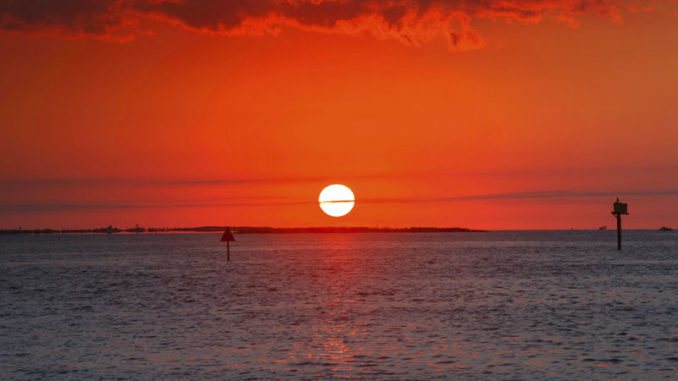
Pamlico Sound sits between N.C. mainland and the Outer Banks
North Carolina’s Pamlico Sound is the largest lagoon on the East Coast of the United States. It’s an important location for anglers and hunters alike. It is separated from the Atlantic Ocean by the Outer Banks.
The Pamlico Sound is home to many different species of fish, including red drum, speckled trout, flounder, striped bass, croaker, spot, pompano, kingfish, and bluefish. Crabs, shrimp, oysters, and clams are also present in big numbers. Various waterfowl use the area as nesting sites.
So where did the Pamlico Sound get its name? The sound was named after the Pamlico Native American tribe that once lived along the sound’s banks. They were referred to as the Pamouik by early European explorers.
The Pamlico tribe were well known for creating elaborate dugout canoes, and they traveled a great deal. Artifacts from the tribe have been found as far away as New England. They were skilled hunters and anglers, and grew corn and various vegetables and fruits.
The tribe is officially extinct
The tribe spoke an Algonquian language, one of the largest language groups of all Native Americans. Other tribes that spoke Algonquian included the Ojibwa, Wampanoag, Pequot, Narragansett, Shawnee, Chippews, Blackfoot, Cheyenne, and Arapaho, as well as many others. The Algonquian language was spoken all across Canada, the U.S. eastern seaboard, the midwest, and several western states.
At its height, the Pamlico tribe numbered in the thousands. A smallpox epidemic took a heavy toll on the tribe, shrinking their numbers to less than a thousand. They did not accept European settlers, but rarely fought them until the early 1700s. Then, they joined forces with the Tuscarora faction to fight the settlers during the Tuscarora War.
During that war, many more Pamlico were killed. In a cruel twist of fate, when the war ended, the Tuscarora signed a treaty agreeing to destroy what remained of the Pamlico. By 1715, any Pamlico members still living were either enslaved or absorbed into the Tuscarora tribe.
Though the tribe is now extinct, the name lives on in the Pamlico Sound, Pamlico County, and the Pamlico River.


Be the first to comment